Introducing the stunning Blue Lyretail, a freshwater marvel that adds a touch of elegance to any aquarium with its vibrant hues and distinctive lyre-shaped tail.
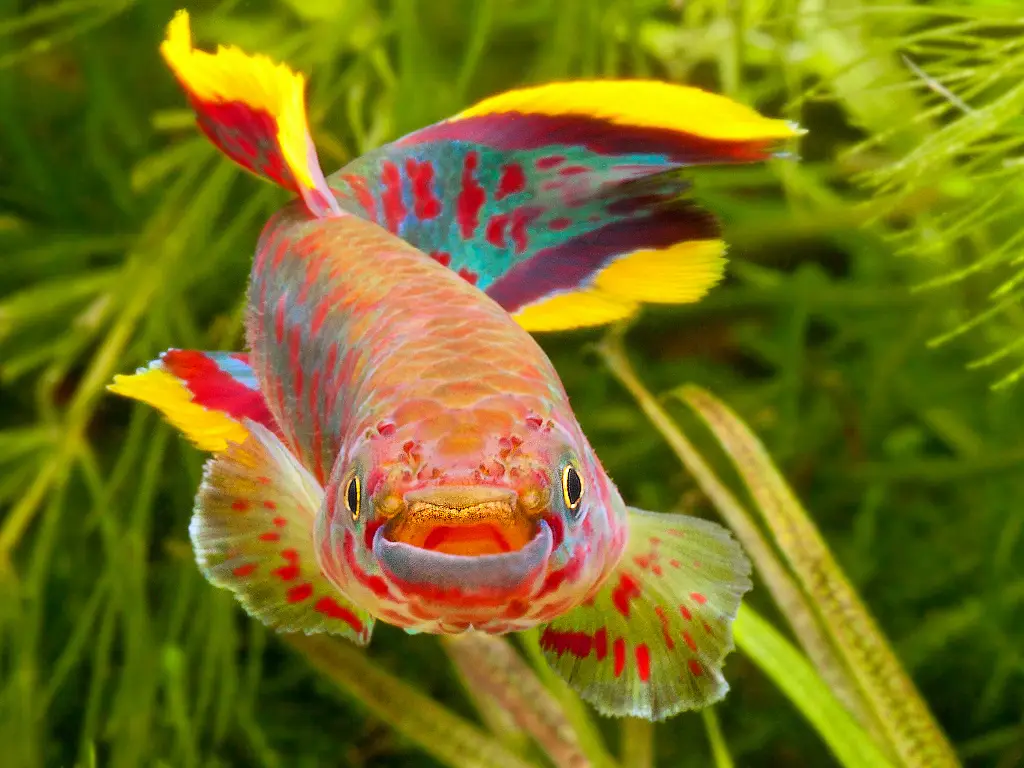
Introduction
The alluring properties of the Fundulopanchax gardneri are a true standout in the aquatic world. Come with me for a deeper dive into what they’re all about.
This Steel Blue Killifish is an attractive aquarium fish with a vibrant coloration. It has become popular among aquarium hobbyists for its eye-catching colors and unique lyre-shaped tail.
In this comprehensive guide, we will cover various aspects of the Blue Lyretail Killifish, from its incredible and endearing physical characteristics and origins to breeding and beyond.
This will provide valuable information for hobbyists who have begun the journey or are looking to house a few Steel Blue Killifish in their aquarium. Get ready to learn all there is to know about tropical fish care and how to extend your killifish species’ lifespan in your home tank.
Overview of Steel Blue Killifish
The Steel Blue Killifish, known as the Blue Lyretail Killifish, is a non-annual Killifish with a life expectancy of up to 3 years with proper care. Check below for more details on this tropical killifish.
| Scientific Name | Fundulopanchax gardneri |
| Family | Nothobranchiidae |
| Common Name | Blue Lyretail |
| Origin | West Africa (Nigeria and Cameroon) |
| Life expectancy | 2-3 years in captivity |
| Fundulopanchax gardneri Size | 5-6 centimeters (2 inches) |
| Color and marking | Vivid Blue |
| Tank size | Nano to small-sized aquarium |
| Temperament | Peaceful |
Physical Characteristics
The male vs. female killifish dichotomy is better understood by clearly analyzing their unique physical differences, which aid in easy identification.
On a general note, the Blue Lyretail is a small-sized fish with a slim body and elongated fins, particularly its notable lyre-shaped caudal fin, from which it obtains its name. The Steel Blue Killifish appearance usually revolves around a vivid blue coloration, although variations with shades of turquoise and green are also frequently observed.
Specifically, the characteristics of lyretail killifish vary between males and females. While the males boast prominent vertical stripes along their bodies, enhancing the fish’s coloration and visual appeal, the female Steel Blue Killifish has a more muted aesthetic.
Origin and Scientific Name

The Blue Lyretail Killifish is indigenous to the coastal areas of West Africa, particularly in countries like Cameroon, Nigeria, and Ghana. It dwells in shallow, slow-moving waters, including streams, rivers, and marshes in the Benue and Cross River basins of Cameroon and Nigeria. The lyretail sustains itself by consuming small insects, crustaceans, and plant matter.
Captain R.R.D Gardner, who collected it specifically, ascribed it its scientific name, Fundulopanchax gardneri, in 1911. The similarity in the last name is not accidental.
Life Expectancy
Lyretails have a lifespan of around two to three years when kept in captivity if they receive adequate care and maintenance. Factors such as water quality, diet, and environmental enrichment significantly determine their longevity and overall well-being.
Size
Blue Lyretails are relatively small fish, typically attaining lengths of approximately 5 to 6 centimeters (2 to 2.5 inches) when fully grown. Due to the Fundulopanchax gardneri size, these creatures are well-suited for nano and small-sized aquarium setups, allowing hobbyists an opportunity to showcase their aesthetic beauty in confined spaces.
See also: The 39 Most Colorful Freshwater Aquarium Fish for even more colorful fish!
Colors and Markings
As their name suggests, Blue Lyretails are distinguished predominantly by their striking blue coloration, which covers their body and fins. Males often display iridescent hues and intricate patterns, whereas females tend to have more subdued colors with a silver or yellowish tint.
The dorsal and anal fins of male Blue Lyretails may also feature elongated filaments, which serve to increase their visual allure and differentiate them from females.

Tank Setup and Water Requirements
Before we dive into the details of the ideal Steel Blue Killifish tank setup, I’ll briefly summarize the stats regarding water parameters below.
| Water Parameters | Figures |
| Temperature | 75-820F |
| pH level | 6.0-7.0 |
| Water hardness | 3-10 dGH |
Tank Size
A minimum tank size for a killifish is 20 gallons, it is a great way to start keeping a small group of Steel Blue Killifish. A 10 gallon tank can also work for a Blue Lyretail pair or trio in a planted tank.
Substrate
Fine sand or gravel will do the job perfectly; opt for dark-colored variants to increase the contrast between the shimmering blue color of the Steel Blue Killifish and the darkness of the aquarium substrate.
Hiding Spots
Driftwood, rocks, and caves are necessary for a Blue Killifish tank to provide rest and solace, especially in a tank with aggressive and hyperactive males.
Plants
Live plants for killifish like java moss and fern replicate their natural environment and help reduce stress.
Filtration
Introduce a gentle filtration system like a sponge filter to maintain water quality and control aggressive water flow so your fish don’t get stressed.
Key points: water pH for Fundulopanchaz gardneri should be kept at a slightly neutral to acidic level to reduce stress and encourage activity in the tank.
Compatibility and Tankmates
Killifish compatibility is a large determinant of their lifespan and behavior in a tank. If you desire an assorted home tank with multiple species for your visual pleasure, this section is for you—impossibility is not a theme here! Let me show you how to achieve your dream home aquarium.
When creating a community tank for killifish, it’s essential to consider their tiny size and tranquil temperament. They thrive in community aquariums alongside similarly sized, non-aggressive species that share their water parameters and habitat preferences.
Appropriate companions for the tank may include peaceful aquarium fish like small tetras, rasboras, and dwarf cichlids, as well as bottom-dwellers like Corydoras catfish and small shrimp. However, it is advisable to refrain from housing them with larger or more aggressive fish, as this potentially intimidates or outcompetes them for resources.
Steel Blue Killifish tankmates tips
- The right tank size will increase the the Blue Killifish’s swim area and control the level of male aggression in a tank.
- Another way to curb aggression in Killifish is to note the existing male-to-female ratio and alter it accordingly. For better balance in your tank, keep a ratio of 1 male to 2-3 females. In a male-dominated tank, construct visual barriers to break the line of interaction.
Diet and Feeding
Feeding Killifish just got easier; here is the ABC of it!
Blue Lyretails are omnivorous fish that feed mainly on small insects, oysters, and plant matter in their natural habitat. When kept in a confined space, they easily consume a diverse diet consisting of top-notch flakes, algae wafers, pellets, and frozen or live foods.
- Feeding Frequency: Provide small, frequent meals throughout the day to accommodate their small stomach capacity and fast metabolism. Prevent overfeeding, as it can lead to obesity and health problems.
- Dietary Variety: To provide essential nutrients and stimulate natural feeding behaviors, supplement their diet with frozen or live foods like bloodworms, daphnia, and brine shrimp.
- Vegetable Matter: Incorporate vegetable matter into the Steel Blue Killifish diet, such as blanched spinach or zucchini, to ensure a balanced nutritional profile and promote digestive health, the Steel Blue Killifish diet should incorporate vegetable matter, such as blanched spinach or zucchini.
Your dietary choice regarding feeding killifish ultimately affects their health, performance, and visibility of their colors. Take this section with complete and utmost seriousness.
For more on feeding your aquatic pets check out The Ultimate Guide to Fish Food: Pros and Cons & Best Choices!
Sexing and Gender Differences
Sexing killifish is an integral part of the breeding process. It helps aquarists identify them quicker when breeding season is approaching. It is also a way to select compatible breeding mates to help continue the cycle of a healthy aquarium. Without further ado, let’s get into it!

It is quite easy to differentiate between male and female Blue Lyretails, particularly during the breeding season when the visible differences between the sexes become more distinct.
- Male Characteristics: Male Blue Lyretails typically show brighter colors, longer fins, and more intricate patterns than their female counterparts.
They also develop elongated filaments on their dorsal and anal fins, enhancing their overall appearance. When it comes to size, they are smaller than the female Steel Blue Killifish.
- Female Characteristics: Female Blue Lyretails tend to have duller colors and shorter fins than males. They may also display a rounder belly, particularly when gravid with eggs. The female killifish tail shape is also rounder and less extravagant compared to the males, who have vibrant colors and flowing fringed tails.

You can also identify Fundulopanchax gardneri gender differences with their temperament and demeanor in any tank. While the male killifish displays traits of dominance and is more territorial, the female exhibits a more passive demeanor and will spend more time in their hiding spots to avoid aggressive males during the breeding season.
Let’s conclude the discussion of male vs. female Steel Blue Killifish with a simple table to help you identify the clear differences.
| Features | Male Killifish | Female Killifish |
| Size | Large | Smaller than the males |
| Coloration | Predominantly bright blue body with glistening scales that reflect light, including yellow, red, and and orange hues. | Gray, brownish, or muted colors to help with camouflage in the tank |
| Tail Shape | Rounder at the edges, smaller with duller colors | Larger with sharper colors, pointed or fringed tails. |
| Temperament | Aggressive, overzealous | Calm, passive, often hide from aggressive male |
Breeding the Steel Blue Killifish
Breeding Steel Blue Killifish is a semi-annual process that can be a satisfying experience for hobbyists who are keen on observing innate behaviors and increasing their population through reproduction.
The semi-annual strategy means the egg can survive a period of drying and still remain entirely healthy when permanently submerged. These submerged eggs hatch within 2-3 weeks, depending on the water parameters, especially the temperature.
Breeding Setup
Create a separate breeding tank equipped with fine-leaved plants like Java moss for breeding or killifish spawning mops to provide suitable spawning sites and refuge for the eggs. Setting up the aquarium and managing all the parameters for semi-annual breeding is important.
Pairing
Introduce a compatible breeding pair into the breeding tank, guaranteeing that both male and female are in optimal condition and displaying breeding colors. Observe their behavior to indicate courtship and semi-annual breeding activity.
Spawning Behavior
During courtship, males display bright colors and perform elaborate mating displays to attract females. (Yes, the female killifish often show their preference for specific male mates based on their health profile and display strength).
Once the female is receptive, the pair will engage in a brief spawning ritual, during which the female releases eggs while the male fertilizes them externally.
Egg Collection
After spawning, carefully remove the adult fish from the breeding tank to prevent egg predation and ensure a successful Fundulopanchax gardneri breeding process. Gather the sticky eggs using a soft-bristled brush or carefully cut sections of the spawning substrate and transfer them to a separate rearing tank filled with aged water.
Fry Rearing
Blue Lyretail fry is relatively independent and can be raised on a newly hatched brine shrimp or commercial fry food diet.
Extra tips: Maintaining pristine water conditions and providing gentle aeration are equally essential parts of raising killifish fry.
See also: 14 of the most colorful saltwater aquarium fish in existence for even more colorful fish!
Common Problems and Troubleshooting
As a hobbyist, one of the best ways to maximize your experience with Steel Blue Killifish is to properly prepare for the worst possible scenarios and learn how to manage them effectively. It’s not all smooth sailing with these beauties, but our expert tips and tricks can make things a whole lot better.
Some common killifish problems you may likely encounter include extreme male aggression and the potential for jumping out of their enclosure, which seriously endangers their life and safety.
Now, how do we help you prevent these problems?
- To address the issue of Steel Blue Killifish aggression, first, ensure that there is adequate space to curb competition and territorial fights- 20 gallons is a great way to start. Consider introducing visual obstructions with natural decor to reduce direct interaction. Lastly, you can use a tank divider to keep the aggressive male at bay while still letting them enjoy all the benefits of being in a shared tank.
- Since we now know the Blue Lyretail killifish are active jumpers, getting a lid for the tank is the best way to control killifish jumping. Adding driftwood and rocks is also a great way to provide them shelter when stressed.
Recommended Maintenance and Care Tips
Here are all the Steel Blue Killifish care tips you need for a seamless experience.
The Blue Lyretail killifish are relatively hardy and easy to maintain, making them suitable for novice and experienced aquarists alike. However, optimal care, such as regular water changes, proper filtration, and close monitoring of water parameters, is essential to ensure their health and vitality.

- Aquarium Setup: Set up a quality system of filtration for killifish tanks with ample swimming space and natural decorations like driftwood, rocks, and live plants to mirror their native habitat.
It is important to keep their pH level within the range of 6.0 to 7.5 and regulate the tank’s temperature between 72°F and 78°F (22°C and 26°C).
- Water Quality: Blue Lyretails are sensitive to fluctuations in water parameters, so consistency is key to their health and well-being. Water changes for killifish are also essential to keep their habitat fresh and safe from contamination.
- Social Behavior: Blue Lyretails are peaceful fish that thrive in community settings. Keep them in small groups of at least three to five individuals to prevent aggression and encourage natural behaviors.
Remember that effective aquarium maintenance is directly linked to your fish’s vibrant coloration and overall well-being, so never compromise on the golden tips in this section.
Conclusion

Blue Lyretail is a captivating and relatively low-maintenance fish species that adds color and elegance to freshwater aquariums. Their calm temperament makes them a leading name when choosing peaceful community fish and a top choice for aquarium owners worldwide.
By understanding the intricacies of Steel Blue Killifish care, including their unique characteristics, habitat requirements, and breeding behavior, hobbyists can create thriving environments in their Fundulopanchax gardneri tank and enjoy the beauty of these enchanting fish for years to come.
With proper care and attention to detail in this aquarium fish care guide, the Blue Lyretail will undoubtedly continue to enchant and inspire aquarists, whether experienced or new.
Let’s rejig your memory before bowing out.
Expect aggressive behavior from the male species, especially in smaller or slower-moving tanks. Use the tips in the guide to build the best tank.
Steel Blue Killifish prefers neutral to slightly acidic water, and you should not let the mark exceed 7.0 as it can lead to stress and death.

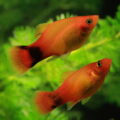
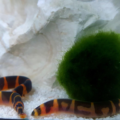

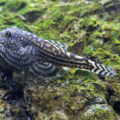

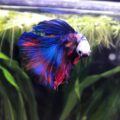

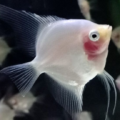
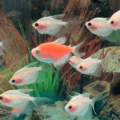
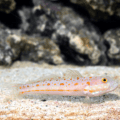
1 thought on “ The Blue Lyretail (Fundulopanchax gardneri): A Comprehensive Guide to the Steel Blue Killifish”